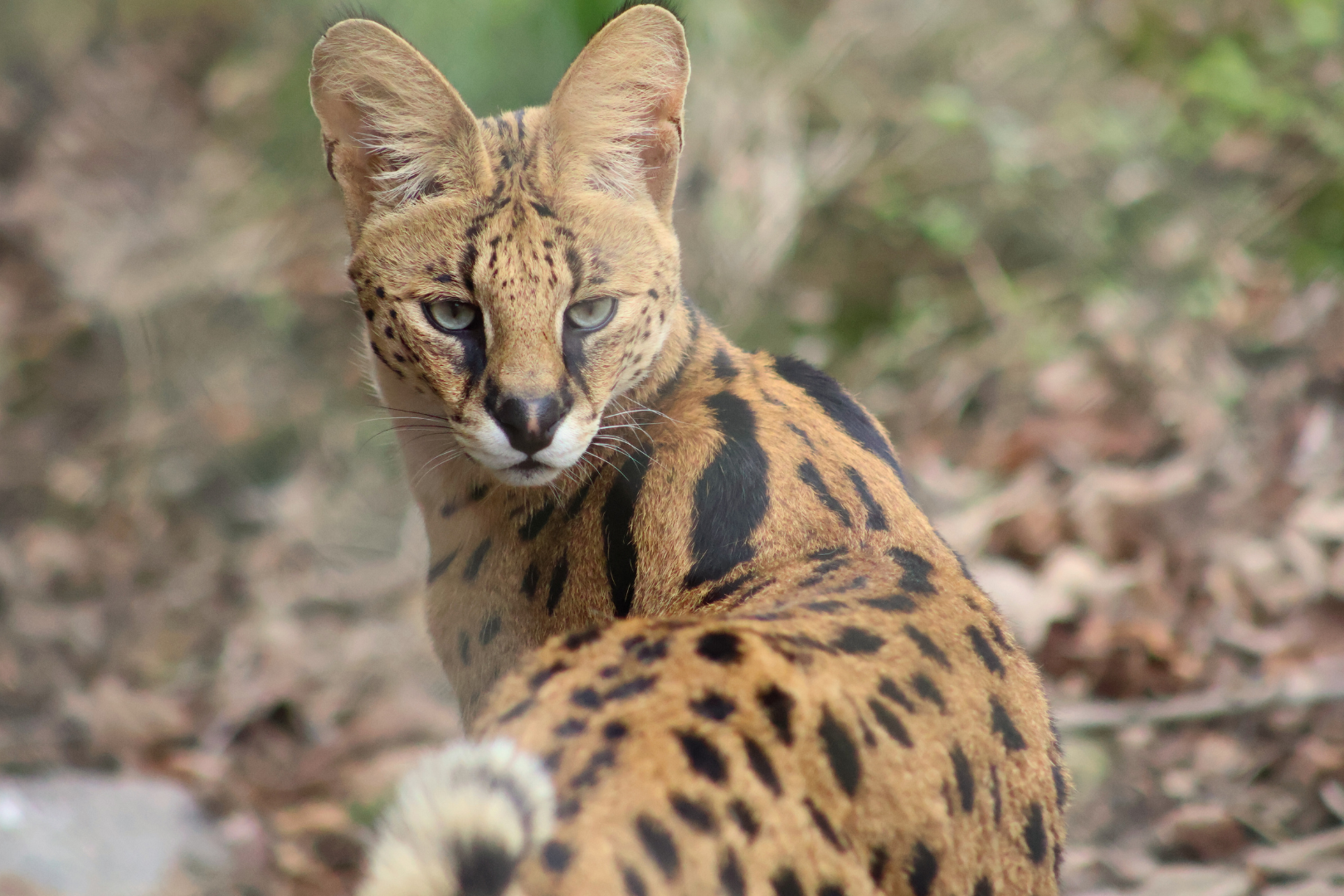I LIVE IN AFRICA
Servals are native to grasslands and savannahs in most regions of Africa where they have plenty of access to water sources. Their spotted pattern helps them camouflage amongst the tall grasses in their ecosystem.
I AM A CARNIVORE
This wild cat species eats a variety of things including rodents, birds, and reptiles. They use their long legs and agility to jump high and pounce on their prey and their long forelimbs to reach into burrows to catch prey.
SERVALS ARE SOLITARY
Servals are a very solitary species and only come together in pairs for breeding. Young servals only stay with their mothers for a few months before going off on their own.
SPRING IN THEIR STEP
Servals have very long and powerful legs that they often use when hunting. This feline can jump as high as 12 feet in the air to catch birds as they fly by.
HELPING SERVALS IN THE WILD
The servals at the Fort Wayne Children’s Zoo are enrolled in the Species Survival Plan (SSP). SSP is a program implemented by the Association of Zoos and Aquariums (AZA) to help ensure a genetically viable population exists.
I AM IMPORTANT TO MY ECOSYSTEM
As small hunters, servals play a crucial role in keeping smaller prey populations, such as rodents and birds, under control.

